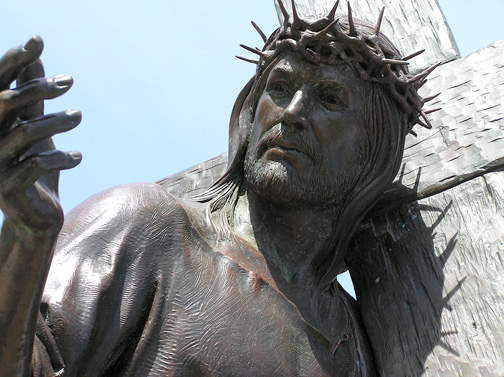If any person on the street, be they Christian or otherwise, was asked what the biggest Christian holiday is, most likely the answer given would be “Christmas.” It gets the biggest promotion, the largest celebration and the longest vacation from work. But Christmas was a lesser feast day during most of the last 2,000 years – it was not even an established holiday until the 4th century and wasn’t widely accepted and celebrated until the end of the 8th century. Even then it was not defined as is today’s Christmas. It wasn’t until the 1840s that Christmas really came into its own.
For the first 800 years, it was all about Easter and commemorating Jesus Christ’s crucifixion and resurrection, which led to the founding of the faith. Easter is celebrated on the first Sunday following the full moon after the vernal equinox, and this year it lands on Sunday, April 1 – April Fool’s Day. Because Easter was such a big occasion in the early years of the church, it was expanded into a whole week of celebration and commemoration called Greater Week, or Holy Week. Although Holy Week doesn’t officially include Easter Sunday, it leads up to it and many churches combine the celebrations.
Holy Week begins on Palm Sunday, the Sunday prior to Easter Sunday. This was the day of Jesus’ triumphant entry into Jerusalem. As Jesus rode into town on a donkey, the gathered masses laid down palm fronds and cloaks ahead of Him as a sign of respect, and He was named King of the Jews. The Passover feast for which He came was the Last Supper.
Holy Monday through Wednesday follow. Not a whole lot is done in the western tradition on these days but some churches may have other teachings and readings about Jesus or The Passion, which didn’t actually happen on these days.
Maundy Thursday commemorates that Passover feast – the Last Supper. Maundy is foot washing, which was a common practice for important people. Jesus, as King of the Jews, had His feet washed and anointed with expensive oil. He then turned around and washed other people’s feet. A king shouldn’t wash other people’s feet, but Jesus did. The word Maundy comes from the Middle English and Old French mandé, from the Latin mandatum, the first word of the phrase “Mandatum novum do vobis ut diligatis invicem sicut dilexi vos.” This is the teaching, in Latin translation, that Jesus gave to his disciples, explaining why He washed everyone’s feet, (John 13:34): “A new Commandment I give unto you, that you love one another as I have loved you.” Christians, either on their own or in church, have dinner to commemorate the Last Supper and in many churches there is foot washing of the congregation members in attendance.
Good Friday commemorates when Jesus was crucified. Judas Iscariot sold Him out for a bag of silver and He was arrested, interrogated and tortured before being crucified with two criminals. He was nailed to wood with iron spikes through his forearms and ankles, and set standing about six feet off the ground on a T-shaped cross, which was later canonized as a Christian cross shape with the top extending beyond the intersection. He languished on the cross for six hours before He died and, when He finally did, it was with a scream that caused earthquakes and broke tombs open, and the protective curtain in the Jewish temple ripped from top to bottom. This signified that the people did not need an intercessor priest or rabbi to speak to God on their behalf in the Holy of Holies, the most sacred part of the temple, but that they could speak directly to God or Jesus. Churches usually go through the Stations of the Cross on Good Friday, retelling Jesus’ path as He carried the cross through the streets and who He interacted with before ultimately being crucified.
Holy Saturday commemorates Jesus being laid in the tomb and, in some churches, the Harrowing of Hell. This story is fully told in a Gnostic Gospel, the Gospel of Nicodemus, one that the church officially rejected and is excluded from the Bible, yet some of the canonical gospels make reference to it.
The Harrowing of Hell is when Jesus is dead and goes to the underworld/hell/Hades and redeems all those good souls who had died before His time, making his salvation retroactive. And when He gets to Hell, Satan tries to bar his entry but Jesus brushes past him. He stares Satan down and doesn’t flinch. Holy Saturday is very limited on church activities and is more for quiet reflection and remembrance of His death.
Easter Sunday is a celebration of Jesus rising again. He comes and visits His disciples to say that all will be well and that He is going to heaven. In the church, this is a huge party. Everything is big and over the top, everyone is happy that Jesus came back and the congregation says, “Alleluia,” or “Hallelujah.” During Lent, prayers do not include “alleluia” because this is a term of happiness and praise, from the Hebrew halelluya, meaning literally “praise ye Yah,” short for Yahweh. Easter is the first service when congregants can use alleluia again.
Easter begins the Christian year as far as celebration is concerned and the weeks are counted from Easter towards Pentecost, 50 days later.

